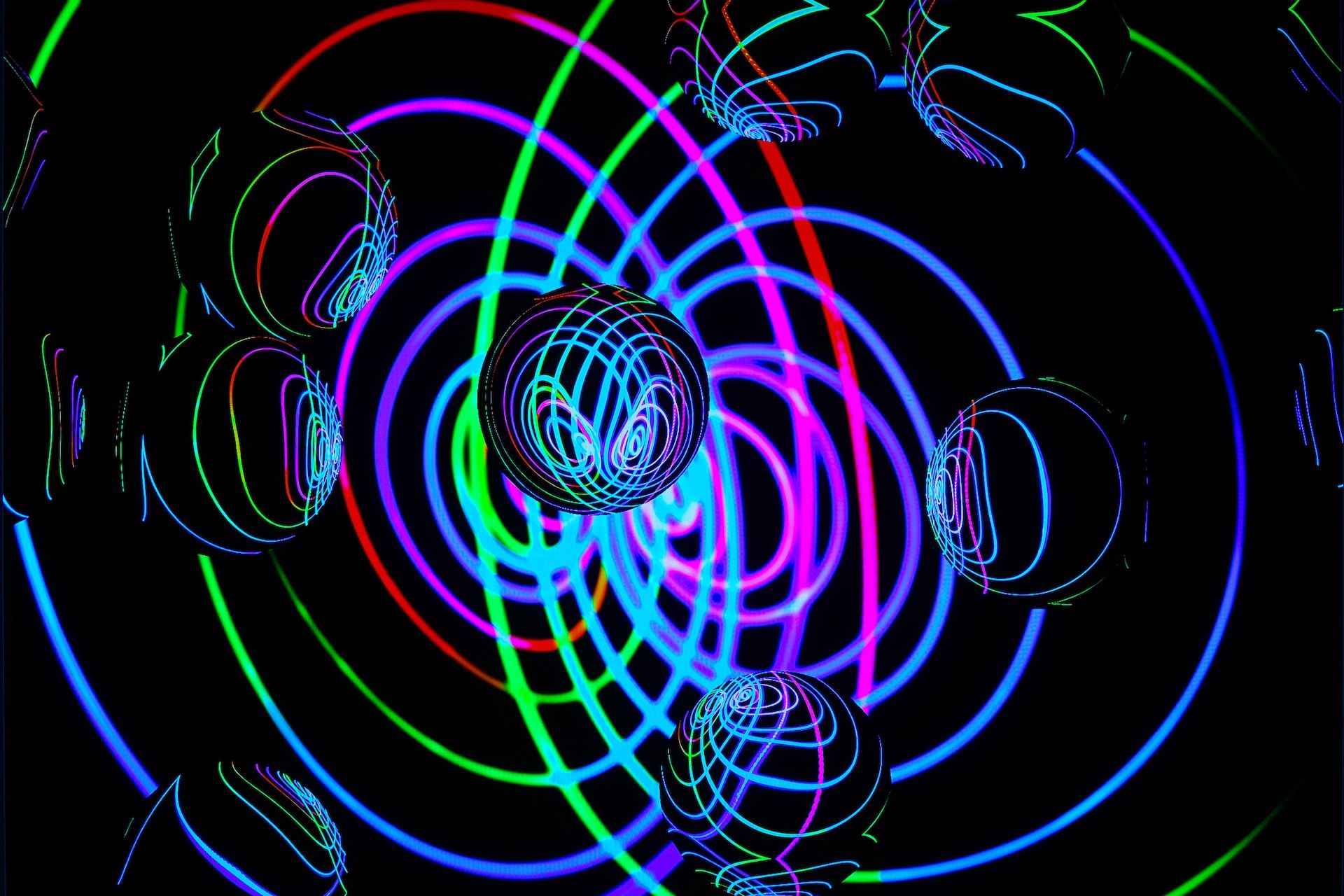
Why Are Scientists So Excited About Quantum Computing?
August 17, 2021 - Emily Newton
Revolutionized is reader-supported. When you buy through links on our site, we may earn an affiliate commission. Learn more here.
Computers have evolved dramatically in the last few decades. They’ve progressed from punch cards and text-based interfaces to the realistic graphics and high-speed machines we have today. The technology hasn’t stopped evolving, either. We’re collectively heading into the era of quantum computing. What is a quantum computer, and why are scientists so excited about it?
What Is Quantum Computing?
It might sound like something out of “Star Trek” or another science-fiction franchise. But quantum computing is closer to reality with every passing year.
What is quantum computing? Investopedia defines quantum computing as “an area of computing focused on developing computer technology based on the principles of quantum theory.” To understand that, you also need to understand quantum theory.
The Merriam-Webster dictionary defines quantum theory as “a theory in physics based on the concept of the subdivision of radiant energy into finite quanta and applies to numerous processes involving transference or transformation of energy in an atomic or molecular state.”
The goal of quantum theory and quantum physics is to predict how matter works. It often does so in ways that seem entirely different from what should happen in the real world. Subatomic particles, for example, can be difficult to predict because they’re too small to see except under very particular conditions. Quantum theory gives physicists the tools to predict how these particles will react in different situations.
The ultimate goal of quantum computing is to help us create computers that can rely on the things we’ve learned about quantum theory and quantum mechanics. Such machines will push computing technology forward. How does a quantum computer compare to existing computing technologies?
Old & Busted vs. New Hotness
Right now, every computer you’ve ever used runs, at its core, on 1s and 0s. That binary language is how we store data, render images, and process everything that goes into and comes out of a computer. The biggest challenge we’ve had to contend with is Moore’s Law, which states that the number of transistors on a microchip doubles every two years — and that eventually, we’ll reach a point where that isn’t possible anymore.
Eventually, unless we shift away from transistors entirely, we’ll stop being able to advance, because you can only cram so many transistors onto a chip before it melts from the heat the transistors generate.
The difference between a quantum computer and a traditional one isn’t something you can quantify in terms of old and new, because they’re two totally different animals. It’s like comparing a Ford Model T to an F22. Both will move you from one place to another, but while one is stuck to the ground, the other can fly.
Getting Qubits All Tangled Up
Let’s play a bit of word association. What comes to mind when you hear the words “computer” and “tangled?” If you’re like most of us, you probably started picturing a mess of twisted wires hidden behind your desk in the hopes that they’ll untangle themselves before you need to unplug something. Quantum computing relies on things being tangled, or rather on the concept of quantum entanglement.
When two subatomic particles are entangled on the quantum level, they remain connected no matter how far apart they are. You could take two quantum-entangled photons and shoot them to the opposite ends of the universe and there would still be a connection between the two. Einstein called the concept “spooky” because the remote interaction between these particles is instantaneous, regardless of how far apart they are.
Instead of using a bit that generates either a 1 or a 0 in the traditional binary language, quantum computers use qubits. They still generate 1s and 0s, but in addition to being one or the other, a qubit can be both at the same time, thanks to the concept of quantum superposition, which states that you can add two quantum states together and still create a third valid state, but that both states will exist until it is measured.
If you’re familiar with the concept of Schrodinger’s Cat, then you understand the basics of quantum superposition.
Potential Applications for Quantum Computing
Beyond Moore’s Law, traditional computers are limited. They can only process so much information at a given time, and even the most powerful supercomputers rely on thousands of CPU and GPU cores. They also work in a very linear fashion — they work through the available data in the order that it’s introduced and can’t jump around to solve problems or reach conclusions faster. While this is eventually effective, it takes a lot of time.
Quantum computers, on the other hand, can create massive multidimensional spaces that represent the problem, making the data easier to navigate. For a traditional computer, a major program can take a week or more to process. A quantum computer can complete the same program in less than a second.
You don’t even have to learn a fancy new programming language to work with quantum computers. IBM’s quantum computing department is using Qiskit — a Python-adjacent language. It’s also a free and open-source programming language, so you can get a leg-up and start learning how to program your brand-new quantum computer.
For scientists, quantum computers will be incredibly valuable when it comes to “finding a needle in a haystack” or sorting through massive amounts of data in a timely manner. Once the technology is more readily available, it will likely appear in industries that are already struggling to sort through petabytes of data, like medicine, finance, and various scientific disciplines.
Carrying a Quantum Computer in Your Pocket
Today, building a computer is fairly straightforward. Collect your parts, pop them into the right slots, plug the whole machine in, and install your operating system. A lack of parts notwithstanding, you can build a great computer with minimum effort. A few hours of effort, and maybe a few more of downloading updates and installing programs, and you have the perfect machine for all your gaming or browsing needs.
Will we ever be able to bring home a quantum computer?
Right now, this is all speculation. It’s impossible to tell if quantum computing will ever be a consumer product because it isn’t even a viable commercial product yet. That said, some industry experts believe we’ll see quantum computers available at the consumer level by 2050 — but that is contingent on a lot of different things happening.
First, they need to be adopted by governments and corporations, and eventually, as we saw with the original room-sized mainframe computers back in the 1950s and ‘60s, we’ll see the technology begin to shrink, to become more affordable and accessible, and only then will we begin to see household quantum computers becoming available.
Could you imagine being able to game on a quantum computer that can process a week’s worth of data in seconds? We won’t be able to keep up unless we figure out a way to interface the computers directly with our mind — and that’s both a different can of worms and a technology best saved for another conversation.
The Future of Computing Is Quantum
Computers have changed a lot since we first started assembling room-sized mainframes. Now, you can carry something more powerful than the spacecraft that carried Apollo 11 to the moon in your pocket — and that small computer gives you access to friends, family, and all the collected information of the human race. That alone should be humbling, but instead of being humble, we’ve decided to collectively dip our toe into the quantum mechanics swimming pool just to see what we can do with it.
We will eventually reach a point with current computing technology where we can’t advance any further. That’s where quantum computing will take over. We’re still a few decades away from seeing it in any sort of consumer-based application, but the potential is there. We just need to work on the adoption.
Revolutionized is reader-supported. When you buy through links on our site, we may earn an affiliate commission. Learn more here.
Author
Emily Newton
Emily Newton is a technology and industrial journalist and the Editor in Chief of Revolutionized. She manages the sites publishing schedule, SEO optimization and content strategy. Emily enjoys writing and researching articles about how technology is changing every industry. When she isn't working, Emily enjoys playing video games or curling up with a good book.







